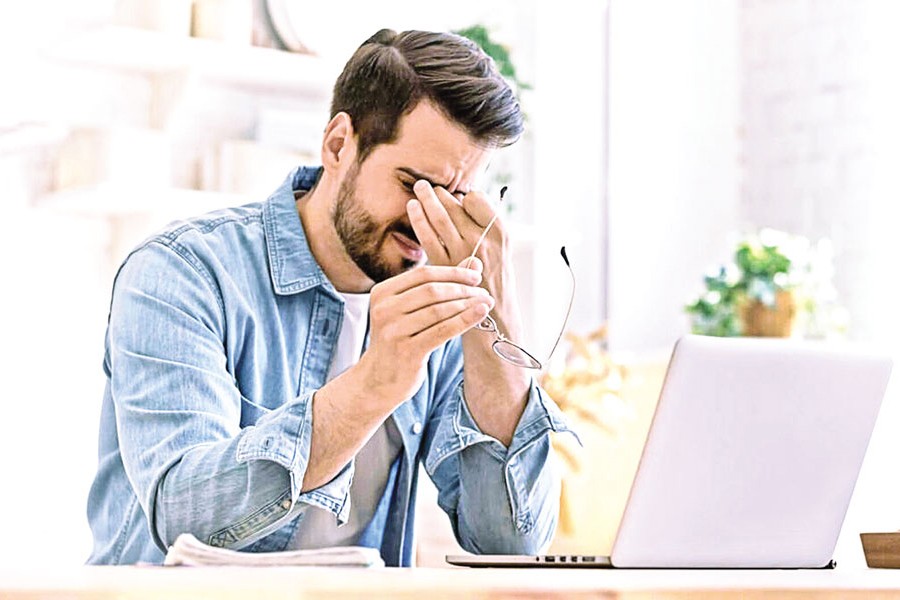
Managing eye strain in our digital lives
FE LIFESTYLE | Wednesday, 2 October 2024

There's a Bengali saying that translates roughly to: "We don't appreciate our teeth until we've lost them." It's a reminder to value what we have before it's too late. In today's world, the same could be said for our eyes.
With technology becoming an inseparable part of our daily lives, the strain on our eyes is higher than ever. The discomfort and inconvenience are clear, but what's more concerning is that prolonged eye strain, without any intervention, can lead to lasting damage.
Eye strain is not a disease in itself but rather a collection of symptoms that arise after extended use of our eyes. It manifests in various ways, such as headaches, dry eyes, blurred vision, and neck and shoulder pain. This may sound familiar to those who have waited too long to address their vision problems.
One of the leading causes of eye strain today is our reliance on digital screens-computers, tablets, smartphones, and other devices. This issue has become so widespread that doctors have coined a term for it: computer vision syndrome or digital eye strain.
Adults spend about seven hours a day staring at a computer screen. The strain worsens when we view screens in poor lighting conditions or use devices with extreme brightness or glare. Normally, humans blink around 15-20 times per minute, which helps keep our eyes moist and prevents irritation. However, our blink rate drops significantly while staring at a screen, leading to dryness and discomfort.
Looking at a digital screen puts more strain on our eyes than reading printed text. The characters on screens are often less defined, the contrast between letters and background can be reduced, and glare from the screen compounds the problem. Without sufficient breaks, this visual demand can lead to many issues, especially for those with existing vision problems.
Thankfully, digital eye strain is typically relieved after resting our eyes. However, it's crucial to adopt protective measures to prevent strain in the first place.
Use matte screen filters: Glare significantly contributes to eye strain, and reducing it with a matte screen filter can make a big difference.
Follow the 20-20-20 rule: Every 20 minutes, look at something 20 feet away for 20 seconds. This simple exercise helps reduce the pressure on your eyes.
Take regular breaks: Staring continuously at a screen is not advisable. Aim to take a 15-minute break every two hours to rest your eyes.
Blink more often: Make a conscious effort to blink frequently when using a computer or digital device.
Adjust your lighting: Ensure the room you're working in isn't too bright or dim. Proper lighting can significantly reduce eye strain.
Alternate between glasses and contacts: If you wear contact lenses, switching to glasses while using digital devices can help alleviate discomfort.
Optimize workspace: Position your computer screen 15-20 degrees below eye level (around 4-5 inches from the centre of the screen) and keep it 20-28 inches away from your eyes. Ensure your chair is at the right height so your feet rest flat on the floor and armrests support your arms. Avoid resting your wrists on the keyboard while typing.
When to seek expert consultation
While digital eye strain is usually not a serious issue, it can lead to more significant problems if symptoms persist. If you experience ongoing pain, redness, vision loss, or irritation, you must consult an eye doctor for a thorough examination and proper care.
m.nusrat@gmail.com